Azerbaijan achieved a stunning victory over Armenian forces during the recent war in Nagorno-Karabakh, its military strategy proving exceptionally effective in difficult mountainous terrain.
Azerbaijan utilised its highly professionalised special forces and technological superiority to comprehensively overwhelm Armenian forces.
This article was submitted to the UK Defence Journal by Sir Richard Ottaway, Member of Parliament for Croydon South (1992-2015) and Chair of the Foreign Affairs Select Committee (2010-2015).
For the United Kingdom, in the midst of the largest root-and-branch review of its foreign and defence policies in decades, the latter developments in drone technology offer important lessons for its Global Britain vision.
To be clear, the origins of Azerbaijan’s victory lie in many years of shrewd policymaking, since its painful defeat to Armenia during the first Karabakh war in 1992-1994. Baku steadily modernised its military and deepened its strategic partnership with NATO member Turkey, while Armenia’s political leadership sat on its laurels.
The occupation of Nagorno-Karabakh has long been a shibboleth of Armenian nationalist politics and a cudgel with which successive Armenian prime ministers have bashed Azerbaijan. Yet the propagandising around an enclave within its neighbour’s territory – one that is internationally recognised as part of Azerbaijan – was not accompanied by the necessary military investments to sustain its occupation.
When tensions boiled over in September, the outcome was a vastly one-sided war. Up to the very last days of the conflict, Armenia’s political leaders did little to prepare the public for the humiliating defeat that was coming their way. The shock and anger felt by ordinary Armenians remains palpable in Yerevan, where mass protests calling for Armenian Prime Minister Pashinyan’s resignation continue and several senior ministers have already departed.

But whatever the Armenian missteps – and they were many – the conflict is instructive for the UK in where to invest militarily. Azerbaijan’s special forces are a highly professional outfit, who played a key role in claiming Armenian strongholds, including the strategically important town of Shusha. However, it is Azerbaijan’s technological prowess, particularly its use of Turkish-made TB2 drones to destroy Armenian armour, that is most revelatory.
These smaller drones are capable of loitering over enemy positions for extended periods and their relatively cheap cost means military commanders can withstand more attrition – a tactical advantage that proved pivotal in Azerbaijani assaults on deeply embedded defensive fortifications.
It was an encouraging first step that the UK’s most recent Strategic Defence & Security Review (SDSR) in 2015 recommended an upgrade to the UK’s drone fleet to counter emerging threats, notably from IS. Keeping pace with the latest advances in drone technology and other military hardware is, of course, essential if we are to maintain our military edge and meet our strategic objectives in the years to come.
If recent reports are to be believed, the Ministry of Defence is eager to expand its own drone programme in the wake of Azerbaijan’s highly successful deployment of TB2 drones to include smaller UAVs as a complement the UK’s existing Predator fleet. This would be a welcome decision, made significantly easier by the recent announcement of a more generous defence budget over the next four years.
But as Britain embarks on its future outside of the EU, I believe there is also a deeper lesson to be learned from Turkey’s development of highly effective drone systems in a relatively short space of time. After the US Congress refused to export drones to Turkey, for fear that they would be used against Kurdish forces, Ankara instead turned to domestic manufacturers to develop its own programme.
The Bayraktar TB2 is the result.
Britain is already a world-leading defence manufacturing hub – one of the few areas where we maintain a competitive edge in manufacturing on the global market. Every effort must be made to ensure we continue to be so. Launching a new high-tech drone development programme to rival the Turkish system would send a clear signal that government intends to follow through on its vision of Global Britain and kick-start a new era of British industrial production.
The upcoming Integrated Review of Britain’s security, defence, development and foreign policy will be an ambitious effort to define the United Kingdom’s role in the world for the coming decades. Maintaining Britain’s place as a leading military power and manufacturing powerhouse must be at its heart – high-tech drone systems would be a good place to start.


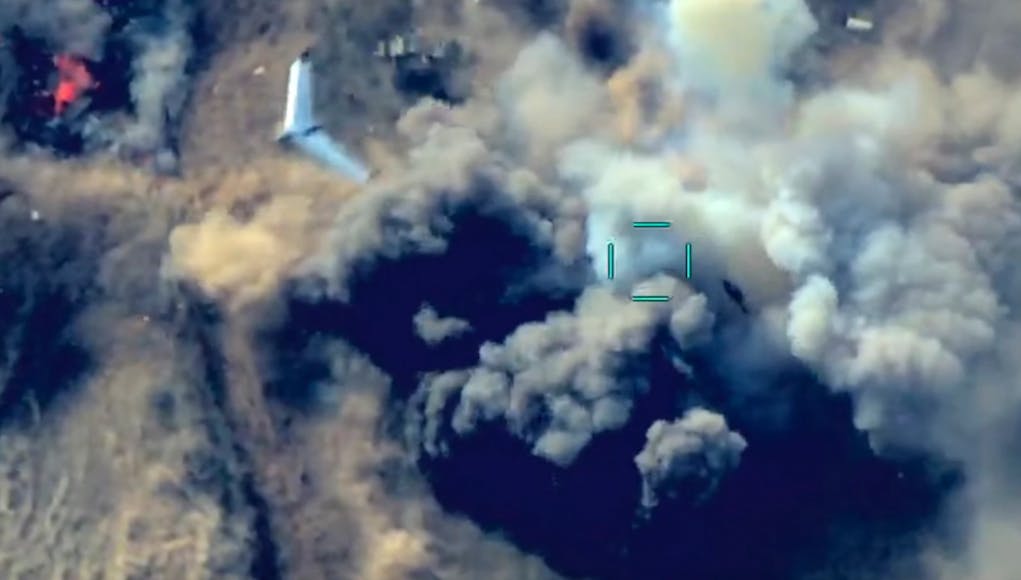
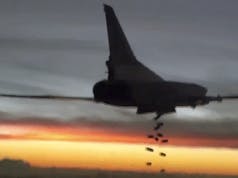
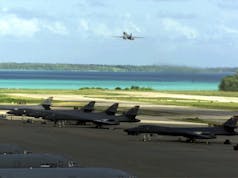
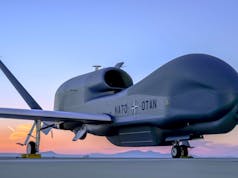
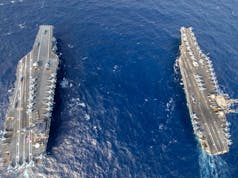




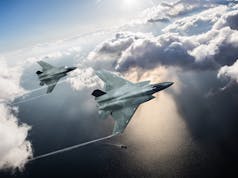


Azerbaijan was never going to lose as it has significant numbers advantage. Plus the drones it did use were not the super cheap ones that everyone is scared of. Core problem is cheap drones can’t carry enough weight to have enough explosives to get through a armoured vehicles hull and we already have predator/protector drones for similar activities.
Saying that, air defense needs to be considered a core capability of every armoured vehicle. We really should be investing in tech like the iron fist active defense system to ensure this does not happen to us.
The Azeris would disagree with you that drones can’t kill tanks. See https://youtu.be/fnmcTxJgRek. They use MAM-C laser guided bombs (6kg warhead according to Wikipedia) targeted at the engine to achieve a mobility kill.
good article and very topical
the Harop has proved pretty devastating in use and I think the UK is missing a step here. We have tried for decades to have 10% of the capability of the US and this is just not working.
so what can we learn from other nations around the world
What is interesting about the above is that all of these nations are seeking to build from a solid base of area denial from which they can launch counter attacks, as such these are defensive strategies.
Additionally, all of the above countries have a clear strategy that has taken years to implement and have invested in their own supply chains.
Perhaps the UK should seek to do the same.
I think we have a good defence budget that is very badly managed.
We have a requirement for 1500 vehicles every year (all types). cost £2bn
We have a requirement for 3 large surface ships every year. cost £2bn
We have a requirement for 0.5 Submarine every year. cost £2bn
We have a requirement for 100 small naval vessels each year cost £250m
We have a requirement for 36 aircraft each year. cost £3.6bn
We have a requirement for munitions each year. cost £1bn
If the above is sequenced, funded and committed to our industry can then start delivering the equipment and invest accordingly.
Given our new requirement for Space(expensive) and Cyber we will need a big increase in the defence budget to really make a go of it.
So we can learn lessons from these and leverage what we do well, to become excellent.
We have great elite forces and SFG
We have excellent ISR capabilities at the moment
World class Arctic warfare force
World class mine hunting force
World class logistics
World class submarine force
Our issue now is mass.
It’s easy for Israel, they are gearing for a very specific war, which is defending Israel from attack. They also have massive amounts of money thrown at them by the US. We on the other hand are gearing for many different types of war. Falklands MK2, Iraq/afgan/Russia/Libya etc etc. Not knowing what the next conflict will look likes make a uniform strategy for how to fight is impossible, so much so that even the US has struggled to do it.
That is my point Steve
we need to invest in areas we are good at, as part of NATO we don’t have to do it all and we are better off having key areas of expertise that we offer to partners (like we do with FOST but on a much larger scale).
We simply cannot afford to continue trying to be all things to all men and the first thing we should do in my opinion is provide an AAD, Cyber and precision fire capabilities for our force and build out from there.
that is the key lesson to be learned from those who have been successful in executing their strategies.
The issue is that is then you have to make a decision, do you gear for the much more likely bottom end conflict of counter insurgency, which is more about troop numbers and mobility or do you gear for top end conflict which requires longer range high tech capability in which case troop numbers have to be cut to pay for it.
We are stuck in the middle ground trying to do both but it would be one big gamble to make, especially if you guessed wrong
Easy?
First the military US help to Israel is to buy US weapons and components or contracts. Israel even help builds factories in US for the propose.
Second the stuff they develop have to work. APS (Trophy/IronFist, Iron Dome, Barak SAM, and extensive UAV fleet.
Israel already had armed TB2 class UAV since begin of the century.
After US dropped the ball after the jet drones of Vietnam era, It was Israel the picked the drones employing them decisively as decoy, recon. and later in 90’s with missiles.
Things do not happen by just dropping money, and UK knows very well the 2 Nimrod fiascos and FRES for example.
I agree the Israeli defence force is very impressive,
Also I have to ask why countries like Sweden and Norway have very healthy manufacturing capability and can have vehicle, air and missile manufacturing whilst we can’t with a much larger budget.
We need to work out what we are good at, what specialism’s we wish to offer our partners and what we want to do.
As a nation with significant soft and cultural power projection capabilities, we need to leverage these as well
lastly, we need to adopt these attritional assets as ultimately we don’t have enough people.
Just remebered that USN bought Israeli UAV’s for their battleships in 1980’s.
Nothing about the main thrust of his point no?
True. Israel doesn’t have to prepare to fight anywhere on the planet in any kind of conditions. That makes things vastly easier especially when it comes to logistics, and what sort of platforms you need for the long distance fight. Is why Israel has no long range bombs, ships, subs, transports, ect. For anything but a very limited long range rescue/raid type mission they would need help from America.
their enemy is at the doorstep. That’s why they developed good tools to keep them at the doorstep.
The defence Secretary said :
On Turkey’s counter terrorism operations in northern Syria, he underlined the success of lightly armed drones used there.
“Or consider Turkey’s involvement in Syria and its use of electronic warfare, lightly armed drones, and smart ammunition to stop tanks, armored cars, and air defense systems in their tracks,” he said.
“According to reports, the Assad regime suffered heavy losses ‘3,000 soldiers, 151 tanks, eight helicopters, three drones, three fighter jets vehicles and trucks, eight aerial defense systems and one headquarters among other military equipment and facilities’,” he said.
“Even if only half of these claims are true, the implications are game-changing.”
I saw a video of what looked like a Boxer 8×8 with a 35 mm Oerlikon turret. It had EO & radar. It was demonstrated shooting down a UAV. I did think it would be handy for the British Army as an addition to CAMM.
Yes, a significant percentage of combat vehicles should be able to shot drones. We often see anti tank missiels at turret sides in some APC, we might see anti drone SAM’s too. Also might get anti-drone drones.
Just looked up, what I was on about. It is the Oerlikon/Rheinmetall Skyranger. You can see it on youtube posted by spotlight , Nov 17, 2020 “9 newest military vehicles”.
I for one would be interested to see some research into a drone torpedo or the like. Could be released into the water by helicopter or minelayer and then left to lie in wait for hostile shipping. Or you could steer one into an enemy harbour
The US had in service until 2001 the Mark 60 CAPTOR an airdropped aluminium tube which contained inside a Mk 46 torpedo . Once anchored to the sea floor it had the power to sit still for up to a few month until a ship passed by. Currently the US is spending a lot of time and effort on the airdropped Quickstrike mine, the ER version can be dropped from 40 miles away. The Drives ‘Warzone ran a few articles on the subject 3 years ago:U.S. Is Betting Big On Naval Mine Warfare With These New Sub-Launched and Air-Dropped Types
Always thought it was a shame that Fireshadow was dropped. Loitering munitions proving there worth.
Before jumping on the bandwagon, it is worth comparing how the same UAVs, the Turkish TB2 did in other areas like Syria and Libya. In Northern Syria, the Turks were faced with the Pantsir system operated by the Russians. This was the later s1 version. The Russians claimed to have shot down 32 TB2s for no losses, the Turks said a few were shot down. Whilst in Libya, the National Coalition force shot down 9 for no losses. These were shot down again by the Pantsir system, but most likely manned by Russian mercenaries.
The engagement between Armenia and Azerbaijan was a bit weird and not what I expected. Armenia was supposed to be backed directly by Russia, whilst it was quite clear Turkey was helping Azerbaijan. Yet Armenia got their arse handed to them. You would have thought it would be more balanced especially as Russia has faced both the Turkish TB2 and Israeli Harops in Syria and would have shared that knowledge.
The UK has a very good counter to UAVs with the Stormer equipped with Starstreaks.
I agree. We should recognise and take seriously the conceptual threat of UAVs, at all sorts of different sizes, altitude of operations, implementations from ISTAR to loitering munitions and swarming capabilities. We should not be too literal in interpreting how the N-K conflict lessons would play out in other theaters.
IMO we need airburst gun systems in addition to Starstreak to counter UAV swarms. We don’t yet seem to be at a stage where laser or RF weapons are practical for UAV defence. For better or worse the CTAS 40 A3B-T anti-aerial-airburst round from Ajax or Boxer would seem to be that option.
MBT, RIP
Not if they are protected by a modern AAA system, such as Oerlikon/Rheinmetall Skyranger with its 35 mm revolver gun.
They don’t reach 20000ft ceiling. That is also the problem of manpads. So a drone at 20000ft or higher can just lob missiles down.
Yes, but the British Army is getting CAMM/SkySabre as a top layer. I would add 35mm Skyranger as a bottom layer. If you want more, you could add CAMM-ER as a higher top layer above CAMM.
Yes, neverthless that means a subtantial investement in our armies, that have been living unthreatened from air in last 2-3 decades due to aerial superiority.
Well Skyranger is based on Boxer, so it could be made part of the UK Boxer buy.
We have been lucky not to have faced air threats in the last few decades, but that can not be guaranteed in the future.
Does anyone actually know on tangent how many land captor/sky sabre we are getting? 1 and 3 missles to train on till there is emergency???